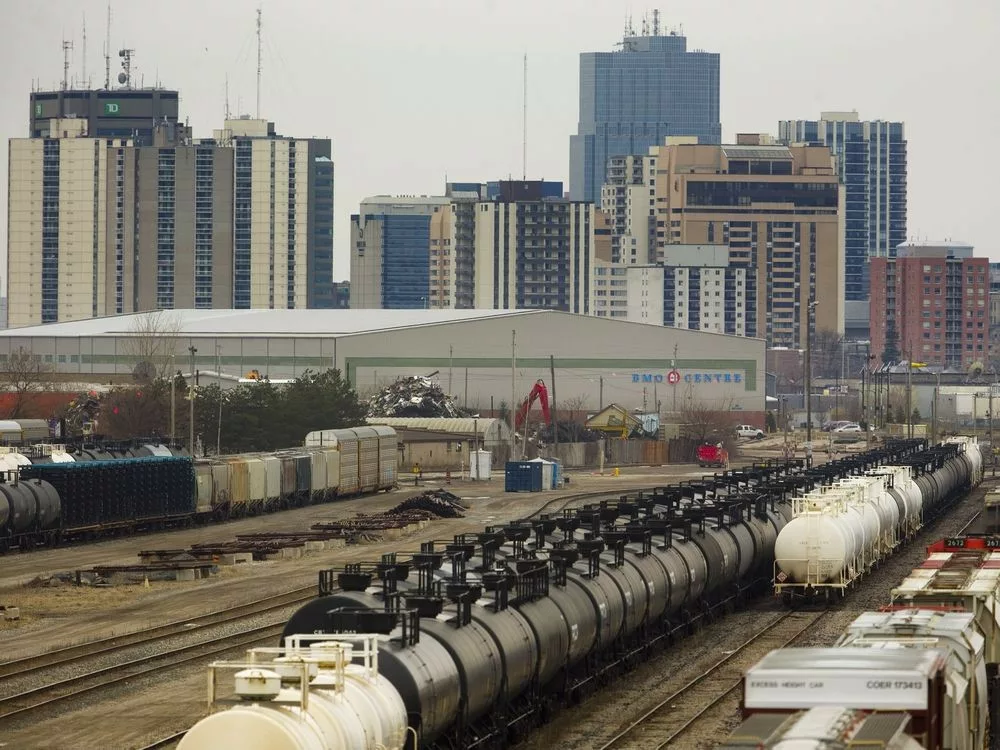
No one is talking about the need to get on with the job of building efficient, electric high-speed rail through the Quebec-Windsor corridor.
Article content
How many times over the past year have Canadian politicians, while doling out billions for new automotive battery and vehicle plants, declared that “the future is electric” or something similar?
The answer is many.
Mayors and municipal councillors have said it. Ontario’s premier and cabinet members have said it. So has the prime minister.
Concurrent with all those announcements about the transition of the auto industry toward an electric future has been the arrival of data that show just how fast the London region is already growing.
Advertisement 2
Story continues below
Article content
New census figures released last month show the London census metropolitan area – which includes the city, plus St. Thomas, Strathroy-Caradoc and slices of Elgin and Middlesex counties – crashed through the 600,000 mark nearly a year ago. Over the last three years, we’ve basically added a city the size of Charlottetown.
All those people, combined with the additional truck traffic the new plants and their suppliers will require, will mean Highway 401 will become even more congested. Think it’s bad now? Wait three more years.
And yet no one is talking about the need to get on with the job of building efficient, electric high-speed rail through the Quebec-Windsor corridor.
Not the Trudeau Liberals. Not the Ford Progressive Conservatives. Both, however, claim to be moving the country toward a greener future.
We’ve pretty much studied the issue to exhaustion – at least 25 times in the last 45 years. There are reasons for that, because both the economic realities and the rail technologies are constantly shifting.
But the latest report, issued last year by Vancouver-based Cambia Consulting and focused mainly on the Toronto-Quebec corridor, is explicit: “The clear conclusion from this study is that high-speed rail makes sense. It makes sense even when putting aside its considerable safety, economical and environmental benefits . . . Most importantly, it makes sense to do it now, rather than building a lower-speed network that will later be upgraded to high-speed rail.”
Advertisement 3
Story continues below
Article content
The break-even cost per ticket for a two-hour and 57-minute trip between Toronto and Montreal, given the study’s assumptions about capital and operating costs: about $72.
Were the system eventually expanded to London, the trip to Toronto would take a little over an hour.
Certainly, Canada’s unique geographic and demographic realities present challenges. Few high-speed rail advocates consider a coast-to-coast system much more than a dream at this point. The Windsor-Quebec corridor is frequently touted as the most realistic place to start such a system. Calgary to Edmonton gets frequent consideration, too.
But we can move past the argument that our population density, compared with some European and Asian countries, prohibits HSR. Southern Ontario’s 86 people per square kilometre is approaching that of Spain (93) and France (118), though still far behind countries such as Italy (197), Germany (233) and the Netherlands (522).
To achieve its climate goals and improve transportation efficiency between population centres, Sweden (population 10.5 million) is upgrading half of the 860 kilometres of HSR it already operates. Finland (population 5.6 million) is adding 200 kilometres to the 1,100 kilometres already in its system. In Norway (population 5.5 million), a rush to more than quadruple the reach of its HSR system soon will bring the total to nearly 600 kilometres.
Advertisement 4
Story continues below
Article content
Shifting drivers and passengers off already congested highways not only makes sense in terms of safety, it also dramatically reduces carbon emissions.
Last year, France banned domestic short-haul flights between cities where the same journey could be made by rail in under 2 1/2 hours. And that was a modest, compromise step. France’s Citizens’ Convention on Climate, convened in 2019 by President Emmanuel Macron, had recommended scrapping flights where train trips could make the same trip in less than four hours.
(Think about the impact such a measure would have on London International Airport, where flights to and from Toronto are a key part of the business plan.)
Among Southwestern Ontario landowners, there is considerable opposition to the bisection of farms and woodlots for the sake of a new transportation link. But the very same disdain was also present during the 1950s and ’60s, when the province began piecing together Highway 401.
If we really wish to lay claim to being a place “where it’s all happening” (to quote the Ontario Finance Ministry TV ad), then it’s time to get on board with the transportation project that’s been derailed too many times.
For Ontario, it would be part of a more comprehensive transportation strategy than just building highways. For Canada, new ribbons of steel would provide important, climate-friendly national projects.
Larry Cornies is a London-based journalist.
Recommended from Editorial
Article content








Comments